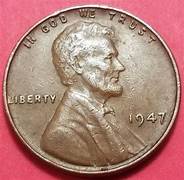On October 19, 1947, the United States experienced a significant change in its labor laws as the federal minimum wage was increased to 40 cents per hour. This change marked an important milestone in the fight for fair wages and improved working conditions for American workers. The concept of a minimum wage had been gaining traction in the early 20th century as a means to address the exploitative labor practices prevalent during the Industrial Revolution. The first federal minimum wage was established in 1938 as part of the Fair Labor Standards Act (FLSA), initially set at 25 cents per hour. By 1947, the country had experienced significant economic growth, and there was a growing recognition of the need to provide workers with a fairer share of the prosperity they helped create. As a result, the minimum wage was increased to 40 cents per hour, representing a substantial improvement in the standard of living for many workers. The increase in the minimum wage to 40 cents per hour had a profound impact on millions of workers across the United States. It provided them with a more livable wage, enabling them to better support themselves and their families. This increase came at a time when the cost of living was rising, making it even more critical for workers to earn a fair wage. The 40 cents per hour minimum wage also helped to reduce income inequality by narrowing the gap between the highest and lowest earners. It aimed to ensure that all workers received a basic level of compensation for their labor, regardless of their occupation or industry. The increase in the minimum wage had broader economic implications as well. By putting more money into the hands of workers, it stimulated consumer spending, which, in turn, helped drive economic growth. This increase in consumer demand had a positive impact on businesses, creating a cycle of economic prosperity. However, it is important to note that the 40 cents per hour minimum wage was not without its critics. Some argued that it would lead to job losses, as businesses might be unable to afford the higher wages. Others contended that it did not go far enough to provide workers with a truly living wage and called for further increases. Over the years, the minimum wage has continued to evolve and increase in response to changing economic conditions and social demands. The fight for fair wages and improved working conditions remains an ongoing battle, with ongoing debates about the appropriate level of the minimum wage and its impact on employment and the economy. The increase in the federal minimum wage to 40 cents per hour on October 19, 1947, represented a significant step forward in improving the lives of American workers. It was a recognition of the value of their labor and a commitment to ensuring a more equitable society. While the minimum wage has continued to evolve, this milestone remains an important part of the ongoing struggle for fair wages and economic justice.
19 Oct, 1947 U.S.A. 40 Cents Per Hour
